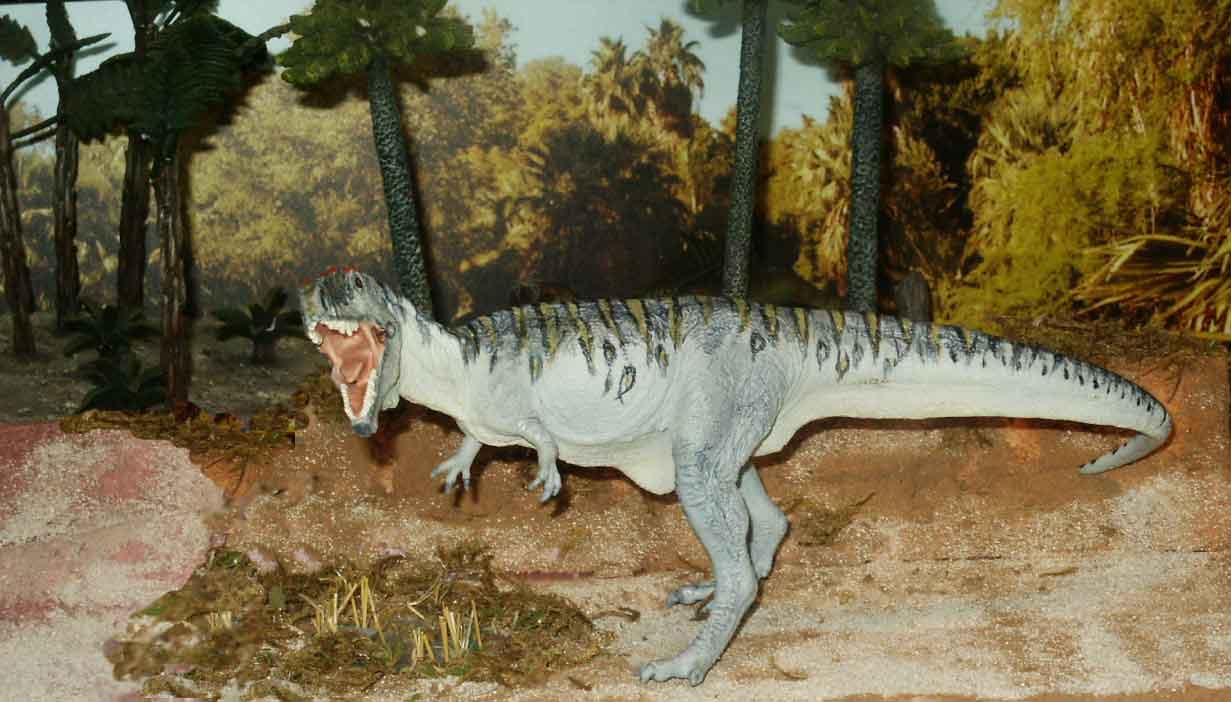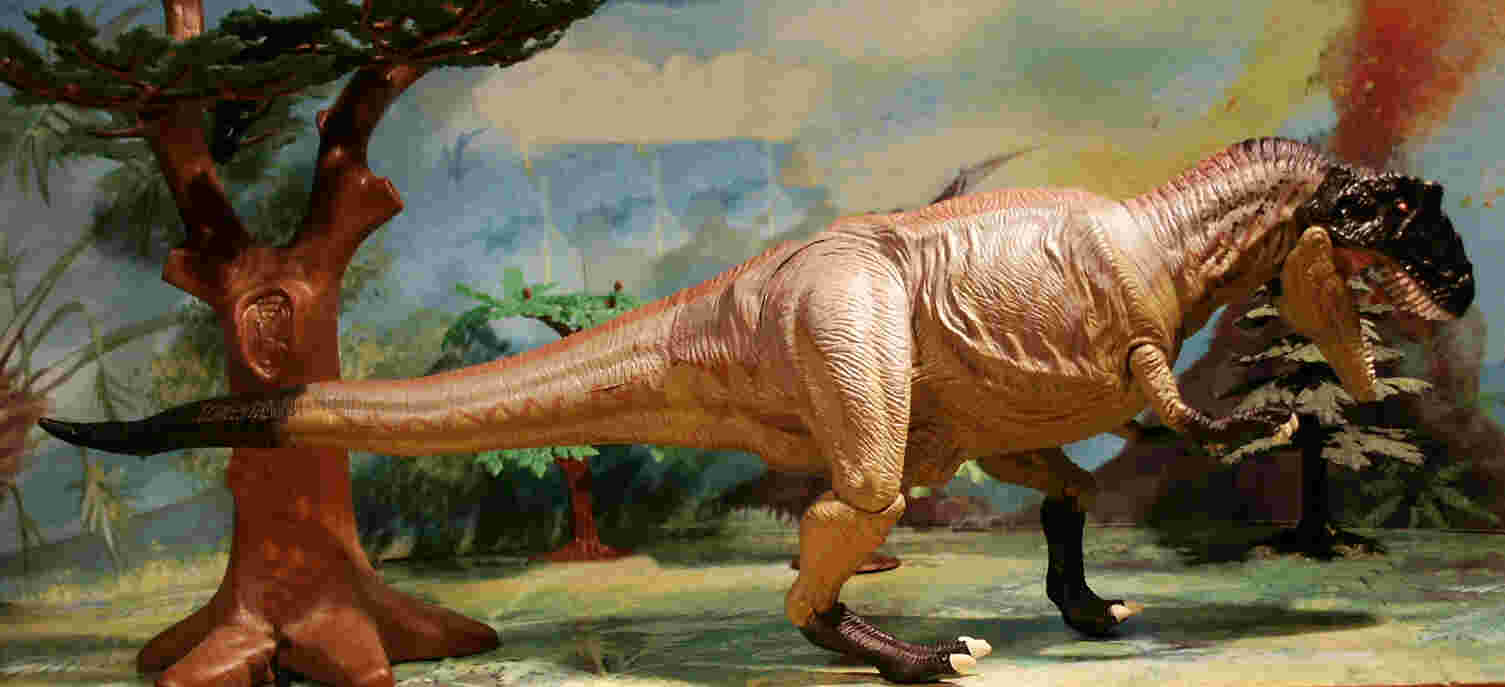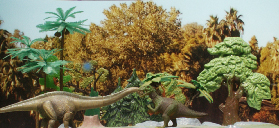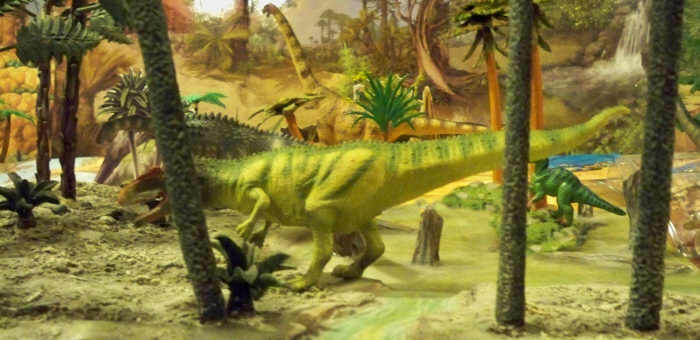Cenomanian South America
theropods
Updated 082816
There was a diverse range of smaller coelurosaurine theropods (Velocisaurus, Unenlagia ) and birds (alvarezsaurids, enantiornithines, Patagopteryx). The large problematic theropod Megaraptor is also present.

The mega predator Giganotosaurus (Giant Southern Reptile) one of the largest predators is ( 6 - 8 ) tons and 43 feet long. Longer but lighter than Tyrannosaurus with a smaller brain Giganotosaurus starts in the mid Cretaceous but disappears before the end of the Cretaceous. One of the largest theropods, It had a low skull, reduced shoulder girdle and robust vertebrae and hind limbs. It occurred some 30 million years earlier than Tyrannosaurus.
 |
 |
|
| Giganotosaurus(Giant southern lizard) is most recently classed in the same family as Allosaurus being most closely related to Acrocanthosaurus and Carchardontosaurus. | It must have preyed on the large titanosaurs that dominated Gondwanaland. The giganotosaurs disappear about the same time the extra large sauropods are gone. |

Mapusaurus remains were found in a bonebed containing at least 7
individuals of varying size and development. A family group of
different sizes in the Patagonian plains of Argentina. Two of the
specimens are very large, the others are smaller. This could be a
family group. The largest bones are comparable in size with it close
relative Giganotosaurus.
Previous Page for Cretaceous Sauropods and the Next Button back to Late Cretaceous South America.
